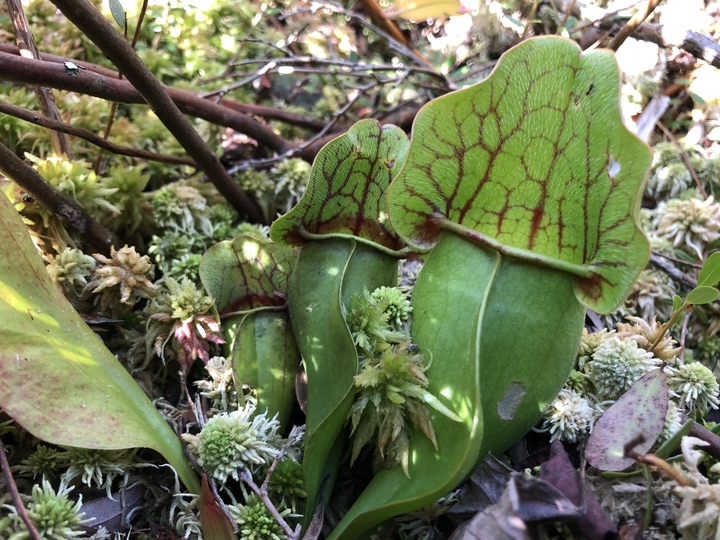Dynamics, diversity, & function of microbial food webs
 Sarracenia purpurea pitchers host complex microbial food webs
Sarracenia purpurea pitchers host complex microbial food websWhat allows species to persist in complex networks of species interactions?
Modern coexistence theory is structured to predict the diversity of competitor species at a single trophic level that interact indirectly through the trophic levels above (consumers) and below (resources). However, natural communities rarely are so simple. How to chain together these modules to account for more complex food web architectures is an open theoretical question, and few food webs (often of only marginally higher complexity) have had their entire range of direct and indirect interactions that shape the abundances of their constituent species fully resolved. A theory of biodiversity is incomplete if it cannot explain the maintenance of diversity in complex communities. Recent approaches that assimilate concepts from network theory offer a first step towards a fully multi-trophic coexistence theory. With this union, it is now possible to ask new questions about how diversity is maintained from simple food web modules to entire complex communities and specifically how network architecture itself influences the stability of these communities.
We are currently working to generalize the application of coexistence theory to full food webs in a model community of protists and larval insects that live in the water-filled leaves of pitcher plants (Sarracenia purpurea). These communities have clear boundaries, cycle rapidly, are amenable to both lab and field experiments, and encompass a broad range of interaction signs, strengths, and network architectures with a tractable number of species. Guided by the theory, we are using lab and field experiments to parameterize each species’ demographic rates and interaction strengths. By assembling the same communities in silico and in vivo, we are testing theory and determining it’s limits to forecast biodiversity.
Related to this, Will did some work on plant-arthropod food webs back in the day.